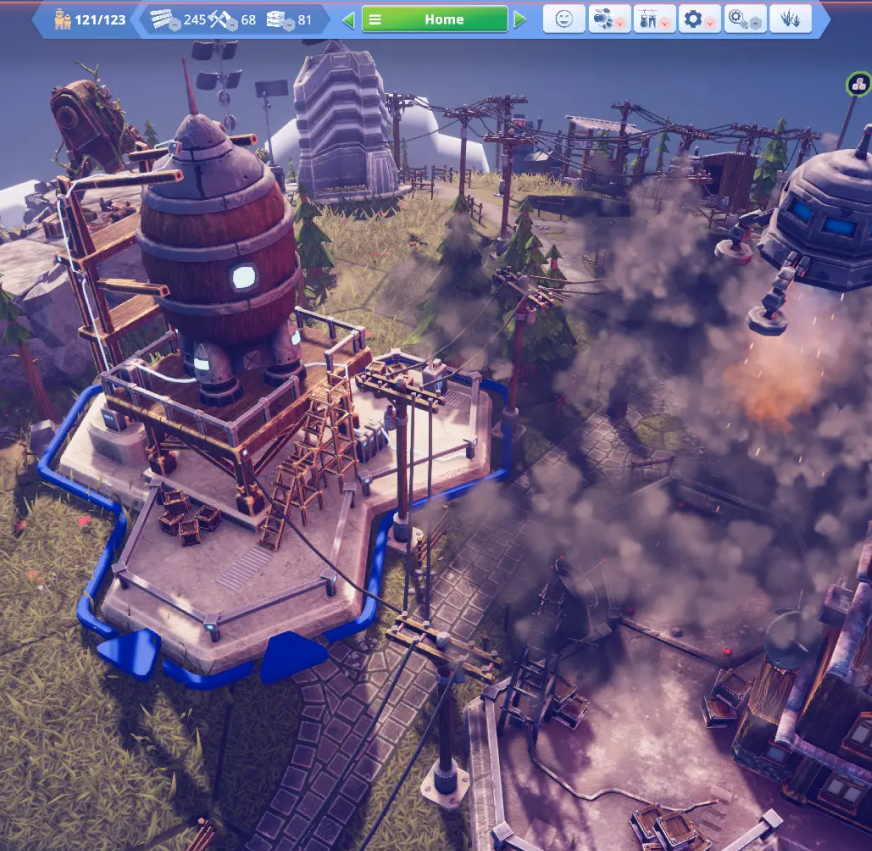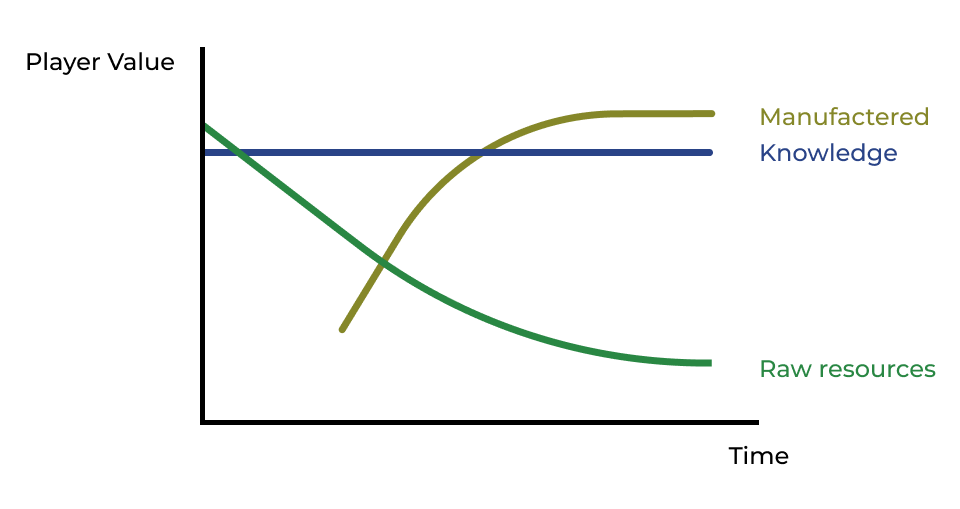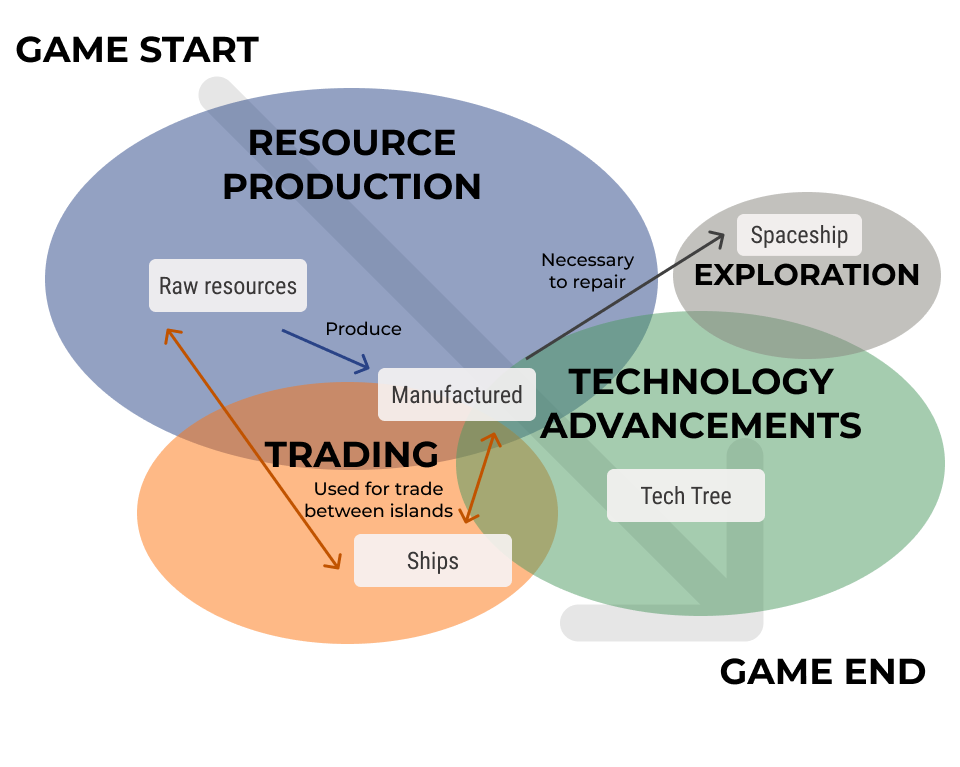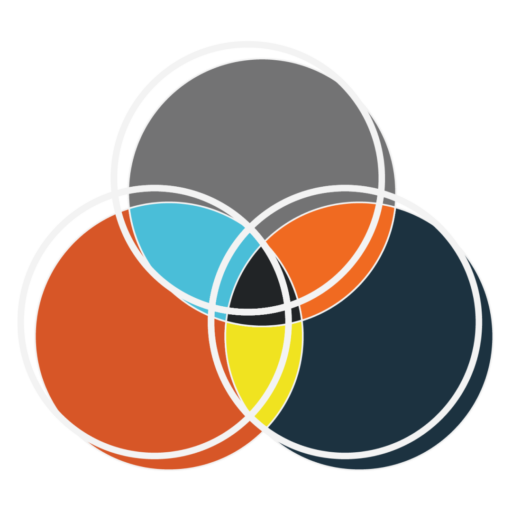Introduction - WHy Before We Leave?
There are games that you want to play because there is an innovative mechanic that draws your attention to it and you want to check what it is all about and analyze it from the design point of view. There are other games that just caught your eye at first glance and that you just can’t forget about, games that immediately elicit a range of emotions. The latter is what happened to me with “Before We Leave”. The first time I saw the game I was dumbfounded. There is something about seeing an entire planet made of hexagons and an odd (but logical) combination between medieval and modern buildings that was simply too much for me to let this game pass.
But after a few hours of playing, I can say that there is much more than meets the eye. There are great design decisions in this game that allow players to make meaningful decisions and enjoy a mysterious and compelling story just through putting the mechanics in action. I would focus the analysis on how the economy works on the first part of the game: from the moment that the player starts until it leaves the planet. Also, I based the analysis style mostly on what is suggested by Nico from GDKeys on this post (albeit he focused more on currencies and this analysis is based on resource management), so if you want to know more, check his blog. Credit where credit is due. Let’s start.

Restoring the spaceship is the main objective of the first part of the game.
But after a few hours of playing, I can say that there is much more than meets the eye. There are great design decisions in this game that allow players to make meaningful decisions and enjoy a mysterious and compelling story just through putting the mechanics in action. I would focus the analysis on how the economy works on the first part of the game: from the moment that the player starts until it leaves the planet. Also, I based the analysis style mostly on what is suggested by Nico from GDKeys on this post (albeit he focused more on currencies and this analysis is based on resource management), so if you want to know more, check his blog. Credit where credit is due. Let’s start.
1. What are the Game Pillars?
Let’s start defining the core gameplay loop of the game. The core gameplay loop consists of the player gathering or producing resources, and then constructing buildings to produce even more resources, all of this to achieve the goal of restoring a spaceship and exploring new planets.
But there are two tricks in this seemingly simple core loop. Technology advances that are critical to produce more resources and advance the gameplay are mostly independent from all of this. It doesn’t matter if the player has a healthy chain of resources or is only producing raw resources.
Knowledge (the resources that allow players to make new researches) only require having a cheap building and some citizens. Also, there is a second catch. Depending on the player’s gameplay style, resources must be shipped to another island in order to continue and deepen the gameplay loop. Just by producing resources and with some basic buildings in place, the player can make a long-term self-sustainable island. The depth of the systems in this case, depend on how willingly are players to explore the game.

Graphic representation of the core gameplay loop
Said that, we could define the main interactions (gameplay pillars) as following: Resources production, Trading, Exploring and Technology advancements. We will see later in the essay how each one interacts with the other to make players advance the gameplay.
2. Resources and Perceived Value
2.1 Raw and Manufactured Resources
As many other Resource Management games, this game have a wide variety of resources, often forming chains of resources and buildings. For example, players can get iron ore that has no value in itself, but that can be later converted into iron using a building called the iron smelter. Then, the iron can be converted into steel, a much more valuable resource.
In this sense, resources change as you would expect in this type of game. Maybe an interesting twist is that some elements like clothing have a “better quality” option, so there is a lot of deepness and breadth regarding each chain of resources.
2.2 Knowledge
But there is a third type of resource that is not raw or manufactured. Knowledge (from the ancients) is gathered by the peeps (workers) from certain tiles that are scattered around the map. Each of these tiles has a characteristic color and the knowledge of that color is stored on that island as a physical resource. This is interesting because if players find knowledge of another color on another island but they need an upgrade that requires both colors, they will have to send “knowledge” by ship to the other island.
Knowledge is used to buy upgrades from the technology tree. But one important aspect of knowledge is that it is limited (although it is enough to complete the whole technology tree). Once you have collected all the Knowledge from a building, there is no chance to get or produce more unless you find another Knowledge tile. This makes it a highly valuable resource because it essentially advances the game and makes the players make meaningful decisions about how they want to advance it. Maybe they care more about getting new buildings and improving the quality of resources or maybe they are more interested in the well-being of their peeps and they want to provide them with better food and cleaner air. Players can make the decision as they please, but they have to take into account that at any given time, they have a limited amount of knowledge.

Player’s perceived value of each resource change over time
3. Islands Economy

Two views, one objective: How will your players manage their islands?
But one of the most fun and innovative elements of this game is how the economy regarding the islands work.
In “Before We Leave” each island is a self-contained economy, namely, resources gathered in a specific island are part of that island, not of the players’ total resources. This set the stage for a lot of interesting and meaningful decisions for players as to how they will manage their islands. For example, they can choose to make each island a self-contained holistic economy (like those proposed by the economist E.F Schumacher in his book “Small Is Beautiful”) and only trade the minimum amount of resources. Or they can go the opposite way and make specialized islands, each one producing a series of resources and then, using the “trade” ships, deliver the needed resources for each island (closer to what Nobel Prize winners Esther Duflo and Abhijit Banerjee described in their book “Good Economy For Hard Times”, but maybe without ships or islands).
It’s up to players to decide how they will manage their islands and how they will advance the game using the technology tree.
4. POssible Innovations
Although I find the concept of each island having its own resources pretty interesting and well executed, I think that there is still room to improve regarding the “trading” concept. Currently, trading between islands doesn’t require any “tax” of sorts and the travel between each island is very short, a few seconds at most. This makes it a no-brainer (or a non-decision technically speaking) to create specialized islands and trade resources between islands when needed. So although the chance to make self-sustainable islands is there, players will quickly adapt the dominant strategy in this regard. If each trip needed a few resources (like some food for the sailors and power to sustain the ship) I think players would develop more advanced strategies and would give more importance to the whole concept of trading, taking more care of the resources they need in every island at any given moment.
Conclusion
In the end, players traverse between the three pillars of the game, engaging more or less at different moments of the game. For example, at the start of the game, players are more focused on producing resources, because shipping them may not be available yet or because they don’t have much resources to ship to other islands. In the mid-game, players focus more on shipping resources and deliver the necessary resources to the island that contains the spaceship. Up until this point, the tech tree is pretty straightforward and more upgrades are almost mandatory to complete the first main objective. After the spaceship is restored and players enter the end-game loop, the game transitions to a free-play experience, where players explore the different technologies in an order that suits them while also balancing the economy of each islands to keep them working correctly.

Overview of how the player traverses the different game pillars throughout the game.
References
Balancing Monkey Games. (2020). Before We Leave (PC version) [Video game]. Team 17.
Castronova, E., Lehdonvirta, V. (2014). Virtual Economies. USA: The MIT Press.
Schumacher, E. F. (1973). Small is Beautiful.
Duflo, E., Banerjee, A. (2019) Good Economics for Hard Times.
Kraj, N. (2021, Jan 21). Keys to Economic Systems. GDKeys. https://gdkeys.com/keys-to-economic-systems/

